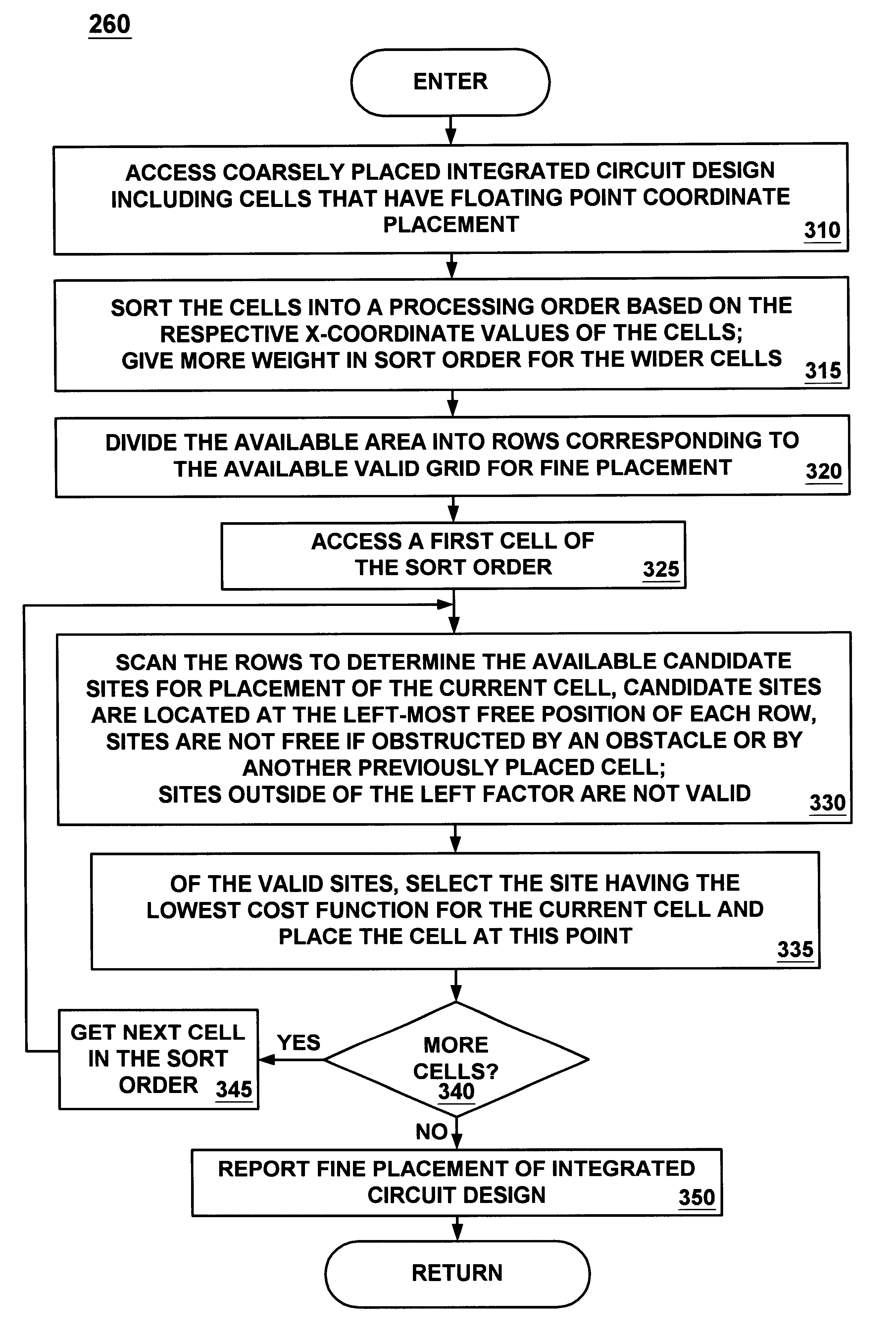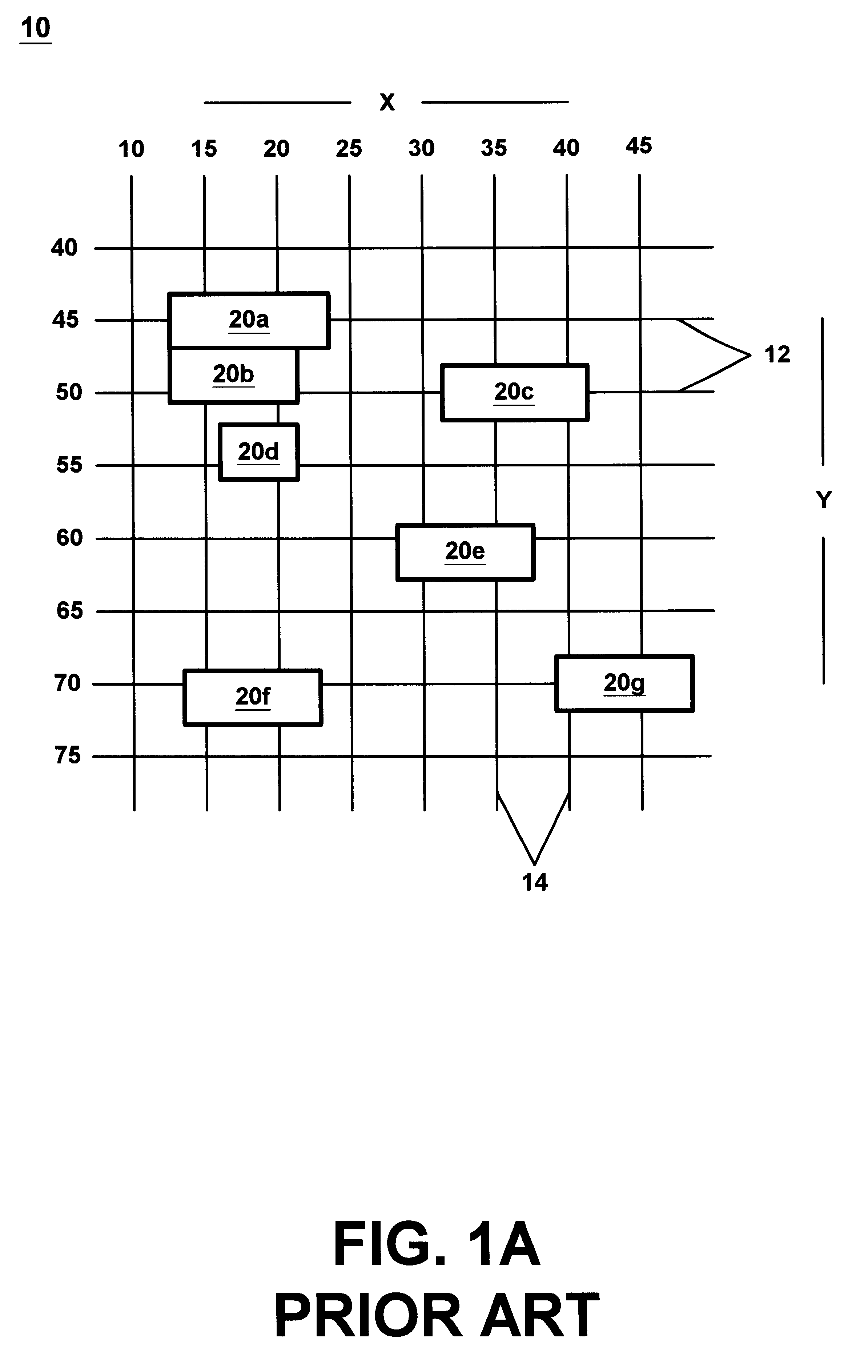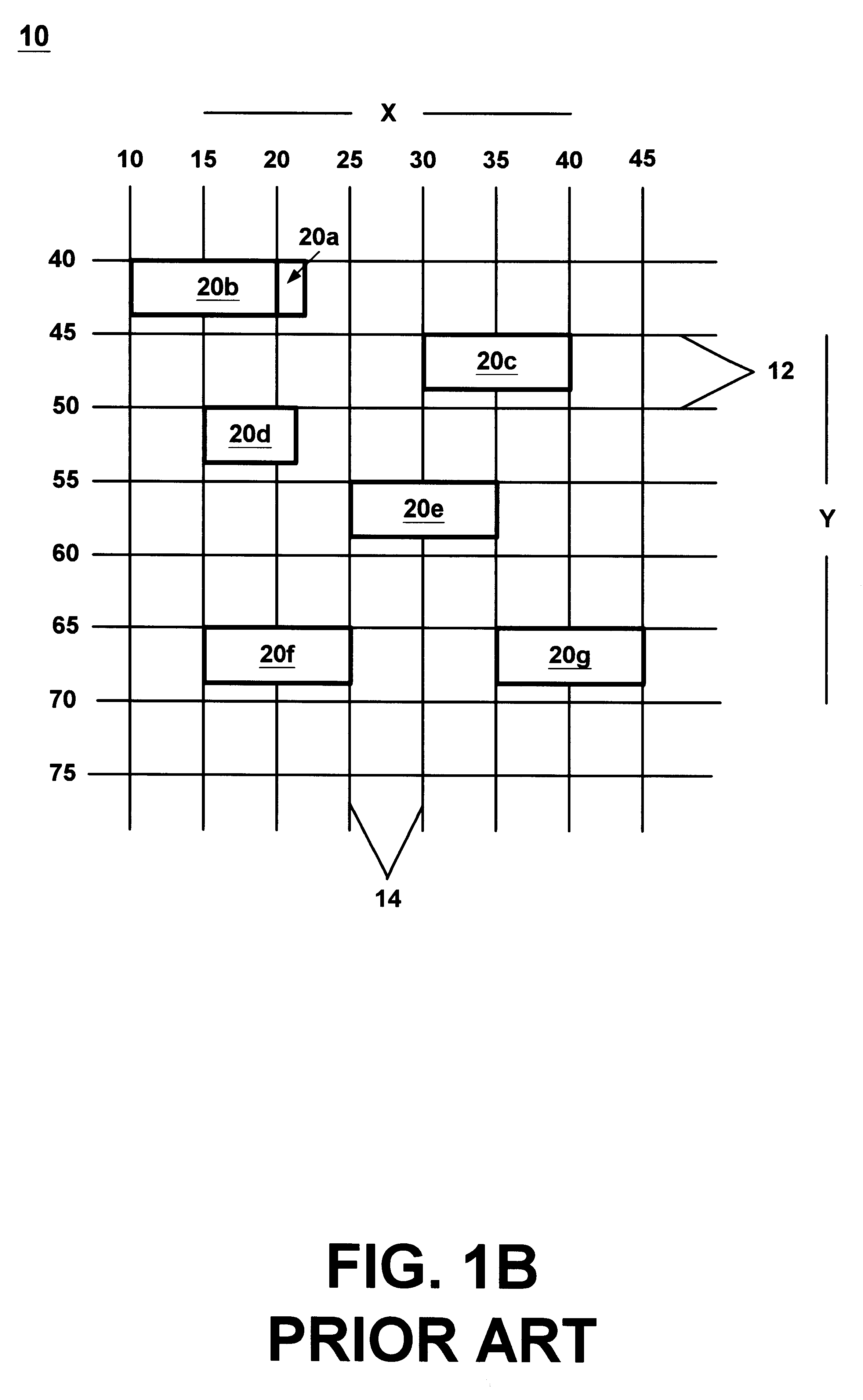Method and system for high speed detailed placement of cells within an integrated circuit design
a technology of integrated circuit design and cell placement, applied in the field of electronic design automation, can solve the problems of complex modern electronic circuit design, the cell placement determined by the coarse placer process may not be legal, and the complexity of modern integrated circuit design is much too large for circuit designers or even engineers of designers to manage effectively by manual techniques
- Summary
- Abstract
- Description
- Claims
- Application Information
AI Technical Summary
Problems solved by technology
Method used
Image
Examples
Embodiment Construction
FOR OBSTRUCTIONS AND INVALID CELL AREAS
FIG. 7A and FIG. 7B illustrate another example of the processing of step 330 and step 335 of the detailed placer 260 of the present invention. This example illustrates that the process of the detailed placer 260 of the present invention can inherently deal with obstructions in the same manner as it deals with placed cells. FIG. 7A illustrates an exemplary layout portion 610 having cells 620a-620i that have already been detailed placed by process 260. Cells 630a-630b remain to be detailed placed and, specifically, cell 630a is the current cell to be placed by process 260. According to this scenario, the candidate sites for placement of cell 630a, as determined by step 465, are shown as 625a-625g. The cell based boundary line for cell 630a is shown as boundary line 615. Candidate site 625d is determined based on the presence of the obstruction 622 which is treated like a previously placed cell to process 330. Memory cell locations can create obst...
PUM
 Login to View More
Login to View More Abstract
Description
Claims
Application Information
 Login to View More
Login to View More - R&D
- Intellectual Property
- Life Sciences
- Materials
- Tech Scout
- Unparalleled Data Quality
- Higher Quality Content
- 60% Fewer Hallucinations
Browse by: Latest US Patents, China's latest patents, Technical Efficacy Thesaurus, Application Domain, Technology Topic, Popular Technical Reports.
© 2025 PatSnap. All rights reserved.Legal|Privacy policy|Modern Slavery Act Transparency Statement|Sitemap|About US| Contact US: help@patsnap.com



